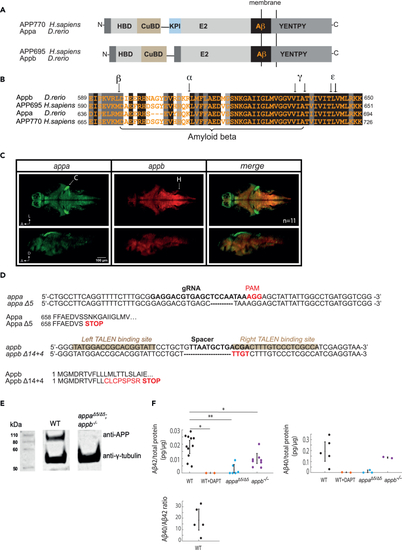Figure 1
- ID
- ZDB-FIG-240206-59
- Publication
- Özcan et al., 2024 - Genetic and chemical disruption of amyloid precursor protein processing impairs zebrafish sleep maintenance
- Other Figures
- All Figure Page
- Back to All Figure Page
|
Zebrafish App protein organization, gene expression, and mutant generation (A) There are 2 (B) Alignment of Aβ regions of zebrafish Appa and Appb to human APP695 and APP770 shows high conservation within the Aβ region and the proteolytic cleavage sites (indicated with black arrows): α-secretase cleavage site (α), β-secretase cleavage site (β), γ-secretase cleavage sites (γ), and ε-cleavage sites (ε). Black, dark gray, and light gray boxes indicate strictly, highly, and moderately conserved amino acid residues, respectively. (C) As detected by multiplexed hybridization chain reaction (HCR), (D) CRISPR/Cas9 targeting of zebrafish (E) Western blot analysis of APP in brain homogenates from wild-type (WT) and (F) Elisa detection of Aβ42 (left) and Aβ40 (right) levels in adult brain homogenates from WT controls, WT animals treated with the γ-secretase inhibitor DAPT for 24 h, |

